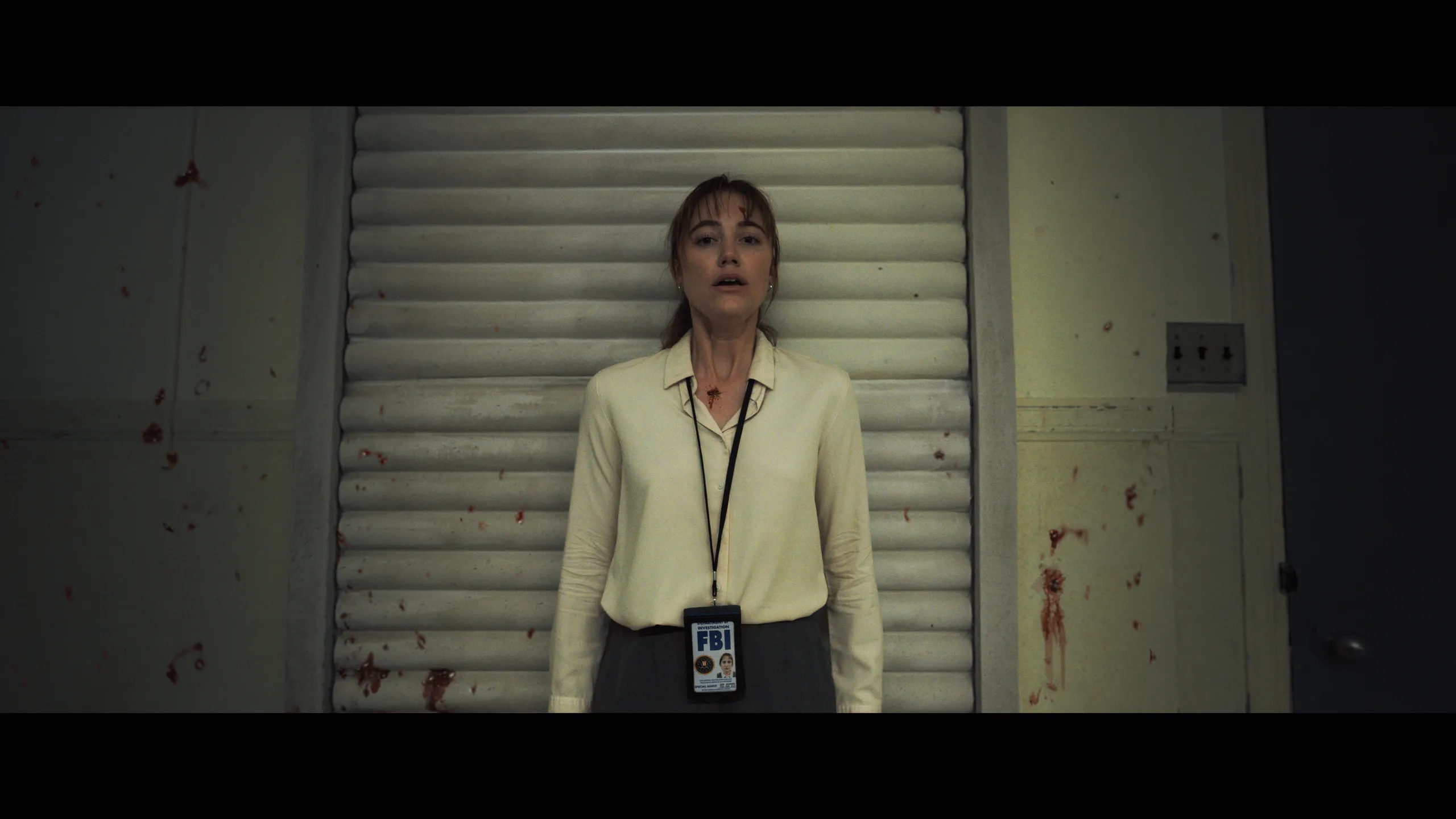Osgood Perkins Lays Waste with Longlegs. First, if you are a longtime visitor here at THiNC., then you know Osgood. He and I go way back. Sure, sure, the guy is the son of Anthony Perkins, the famed star of the movie Psycho. But, WAY more importantly than that? Are his fantastic indie films, The Black Coats Daughter, and I Am the Pretty Thing That Lives In the House… right? These are movies you PROBABLY (about to bet my car here…) have never seen. Which is a despicable shame. So, it should go without saying that you should definitely catch both movies. I mean, duh. Oh, right – we are here for Longlegs. Sorry, sorry sorry… Let’s get to Longlegs shall we??
Movie Review: Longlegs by Osgood Perkins
Osgood Perkins, known for his distinctive horror style in films like The Blackcoat’s Daughter and I Am the Pretty Thing That Lives in the House, takes a significant leap with his latest offering, Longlegs. While his previous works are characterized by slow-burn tension and atmospheric dread, Longlegs marks a departure into a more accessible yet equally unsettling territory, reminiscent of classic thrillers like The Silence of the Lambs.
A Bold New Direction
Longlegs showcases Perkins’ evolution as a filmmaker. While his earlier films focused on the psychological unraveling of characters in claustrophobic settings, Longlegs embraces a broader narrative scope and more dynamic pacing. The film centers on FBI agent Lee Harker (Maika Monroe), who is tasked with investigating a series of decades-long murder-suicides connected by cryptic letters signed “Longlegs.” This storyline allows Perkins to explore a sprawling, decades-spanning mystery, blending supernatural elements with procedural drama.
Throwback Style
The film’s throwback style is a love letter to the great thrillers of the late 20th century. The influence of The Silence of the Lambs is palpable, not only in the narrative setup of a young, determined FBI agent hunting a serial killer but also in the film’s aesthetic choices. Perkins employs wide-angle shots and off-kilter compositions that stretch spaces in unnatural ways, creating a Lynchian sense of the uncanny. The result is a visually arresting experience that feels both familiar and disconcertingly fresh.
Nicolas Cage as Longlegs
At the heart of Longlegs is Nicolas Cage, delivering a chilling performance as the titular antagonist. Cage, known for his versatility and willingness to embrace eccentric roles, embodies Longlegs with a grotesque charisma. His portrayal is a masterclass in controlled madness, reminiscent of Anthony Hopkins’ Hannibal Lecter but with a unique, unsettling twist that only Cage can bring. His performance is both terrifying and mesmerizing, anchoring the film’s tension.
Maika Monroe’s Captivating Performance
Maika Monroe, celebrated for her roles in It Follows and Watcher, brings a compelling intensity to Agent Lee Harker. Monroe’s ability to convey anxiety and determination makes her character’s journey through the occult-infused investigation believable and gripping. Her interactions with Cage’s Longlegs are electric, providing some of the film’s most memorable moments.
A Lynchian Atmosphere
Perkins’ direction is key to the film’s success. He manipulates pacing, extending ominous pauses and cutting away abruptly to keep the audience on edge. The use of mundane settings—suburban homes, empty farms—heightens the sense of unease, transforming the familiar into something sinister. The film’s Lynchian atmosphere is amplified by its off-balance compositions and eerie sound design, contributing to an experience that is as much about mood as it is about plot.
Comparisons and Contrasts
While Longlegs shares thematic similarities with horror classics like Invasion of the Body Snatchers and Night of the Living Dead, it stands out for its unique approach to the serial killer genre. The film’s exploration of societal fears and the potential for ordinary people to commit extraordinary evil is both timely and timeless, reflecting the genre’s enduring ability to comment on contemporary anxieties.
Conclusion
Longlegs is a testament to Osgood Perkins’ growth as a filmmaker. It retains the atmospheric dread of his earlier works while embracing a more accessible, narrative-driven approach. With standout performances from Nicolas Cage and Maika Monroe, and a style that harks back to the golden age of thrillers, Longlegs is a compelling addition to the horror genre. It may not fully escape the shadow of its predecessors, but it carves out its own niche with a blend of style, substance, and sheer terror.
Edited by: CY


